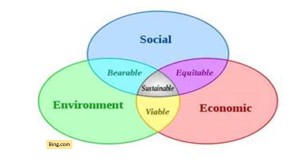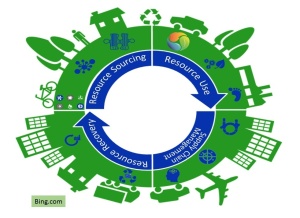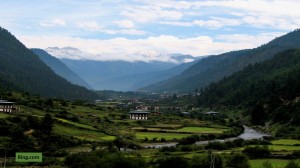Global Warming and Climate change have become very popular phenomenon as of late. Many people are jumping in to play the game of “What is going on with our environment?”. We are now in agreement that an ecosystem (interacting life forms with their environment) impacts your health.
Ecosystem Health Theory is the name used to describe this agreement where natural or human activities may cause negative health outcomes (7). One such outcome are respiratory illnesses. To help you with your eco-literacy skills I offer you a brief educational picture into the Scientific Inquiry process used to define a hypothesis or a theory.
Scientific Inquiry 101: Hypothesis is used when an individual has a bright idea yet others are not quite sure if the idea is real. Scientist love to debate, and discuss, and analyze ideas and hypothesize during long, deep conversations. If you can imagine a room of people that are specialist in their own right, waving their hands in all directions, and offering their expertise about a topic. An expert position may sound like a foreign language where only the specialist is able to understand the dialog.
The key strategy is to create a hypothesis statement, design the test, and run one or many experiments. The test results must meet strict statistical analysis to let the numbers tell the story. The more numbers the better. My Ph.D. data set had over 4,000 rows and about 10 columns in an excel spreadsheet for me to find trends in my study. Thank goodness for the programs designed to run the statistics. A Hypothesis may then be elevated to the status of a Theory after much debate and testing. Rigorous testing that must meet the approval of supporters and deniers of the hypothesis. Now when you read the words Ecosystem Health Theory, you know that we are talking serious business.
You may have an interest on how an urban ecosystem impacts your health. Urban simply means an area that is composed of both artificial human-made and naturally created environmental ingredients. Air pollution, noise levels, traffic patterns, and green space ingredients within the built ecosystem impacts your health (7). Attempting to design a useable model that includes all the features offers a window into the complexity of the urban ecosystem.
It is similar to an automobile that is a composite instrument of mechanical parts. You do not need to know how the whole mechanical system works. All you need to know is how to drive the car to get you where you want to go. You do not need to know all about the bits and pieces of the urban ecosystem. What will help you to adapt and survive is to know which parts of the urban ecosystem makes you un-healthy and which parts improve your well-being.
Respiratory infections and illnesses are a major health problem that prevent you from being productive, increases your visits to health professionals, stops you from going to work or school, and causes death. There are emotional connections to children so many health studies involve the young’uns. Scientists have discovered that low social class, illiterate mothers, overcrowding, smoking by those who live in the home, or pollution released from fuel sources increase the risk of respiratory illnesses in children (6). Stress factors and perceptions related to lower socio-economic groups have been found to increase the danger of experiencing respiratory challenges in urban ecosystems (4).
Other hazardous factors that impact respiratory illness in young children results from living close to highways, pets in the home, decorating the home, dampness, and cleaning a child’s room more than once a day (3). This same study found that airing bed linin in the sun and breast feeding more than three months improves children’s health. At a time when Climate Change conditions have increased the number and frequency of natural disasters, it is helpful to know that a flooded home or extra-ordinary dampness creates a risk factor for respiratory challenges (1). It is essential to find solutions to ecosystem health challenges as more land is being developed into urban ecosystems.
The mysterious benefits generously offered by green critters provide relief from respiratory distress. The complexity of your urban ecosystem makes it difficult to know the exact details on how urban land-use effects your health. It has been found that increasing the amount of ‘green space’ reduces respiratory illness mortality rates in males (5), although the results may be impacted by a male’s perception of the natural ecosystem. The facts are reveling themselves in another study where more greening of the landscape reduces the onset of respiratory troubles with infants that are exposed to traffic-related and other urban pollutions (2).
It is very well-known that industry, urban environments, and motor vehicles increase the concentrations of atmospheric hazardous pollution and is destroying the quality of the air you breathe (8). The relief is in the solar boosted, dynamic, atmospheric filtrating powerhouse modeled by the green trees, bushes, mosses, algae, and any green life form you are able to discover in your ecosystem. These magnificent green organisms ease and lighten respiratory suffering, lower health-care cost, and lessen days missed from work and school.
Up to or more than 20% of the atmospheric pollutants may be sucked out of the air depending on the number of trees or amount of green space that may be found in your ecosystem (8). The Environmental Protection Agency reports where beautifying roadsides and highways with greenbelts may reduce up to 65% of particles floating within the air. Best results have been realized with deciduous broadleaf trees that thrive during the Spring and Summer. In addition, green walls and green roofs bids relief by absorbing pollutants and decrease energy costs needed to maintain comfortable indoor climates.
How the environmental ecosystem impacts your health is becoming well-known. Scientific inquiry has elevated a hypothesis into the Ecosystem Health Theory to advance an understanding of the urban ecosystem. Respiratory illnesses are irritated by many ingredients found in an urban ecosystem. Solutions may be experienced by adding the incredible green air processing, natural machines that purify your air. I challenge you to be an environmental steward and discover ways to increase the green space in your ecosystem.
Elizabeth Armstrong, Ph.D.
My goal to help you improve your well-being and increase your realized wealth. Receive a Free Report and be the first to know about my forthcoming book release at www.jazzyeco.com.
Jump over to my Facebook Fan Page and give a like. https://www.facebook.com/jazzyeco.
REFERENCES
1 Azuma, Kenichi, Koichi Ikeda, Naoki Yanagi, Kenichi Hasegawa, and Haruki Osawa. 2014. Effects of water-damaged homes after flooding: health status of the residents and the environmental risk factors. International Journal of Environmental Health Research. Vol. 24:2. Pps 158-175.
2 Ebisu, Keita, Theodore R. Holford, Kathleen D. Belanger, Brian P. Leaderer, and Michelle L. Bell. 2011. Urban land-use and respiratory symptoms in infants. Environmental Research. Vol.111:5. Pgs. 677-684.
3 Li, Angui, Yuexia Sun, Zhijian Liu, Xiaoxia Xu, Hongfa Sun, and Jan Sundell. 2014. The influence of home environmental factors and life style on children’s respiratory health in Xi’an. Chinese Science Bulletin. Vol. 59:17. Pgs. 2024-2030.
4 Quinn, M.P.H., Kelly, Jay S. Kaufman, Ph.D., Arjumand Siddiqi, Sc.D., and Karin B. Yeatts, PhD. 2010. Parent Perceptions of Neighborhood Stressors Are Associated with General Health and Child Respiratory Health Among Low-Income, Urban Families. Journal of Asthma. Vol. 47. Pgs. 281-289.
5 Richardson, EA and R. Mitchell. 2010. Gender differences in relationships between urban green space and health in the United Kingdom. Social Science & Medicine (1982). Vol. 71:3. Pgs. 568-75.
6 Sharma, Dhananjaya, Kumaresan Kuppusamy, and Ashok Bhoorasamy. 2014. Prevalence of Acute Respiratory Infections (ARI) and their determinants in under five children in urban and rural areas of Kancheepuram District, South India. Annals of Tropical Medicine & Public Health. Vol. 6:5. Pgs. 513-518.
7 Tarocco, S., I. Amoruso, and G. Caravello. 2011. Holistic model-based on monitoring of the human health status in an urban environment system: pilot study in Verona city, Italy. Journal Of Preventive Medicine And Hygiene. Vol. 52:2. Pgs. 73-82.
8 United States Environmental Protection Agency. 2013. Eco-Health Relationship Browser. http://www.epa.gov/research/healthscience/browser/index.html





